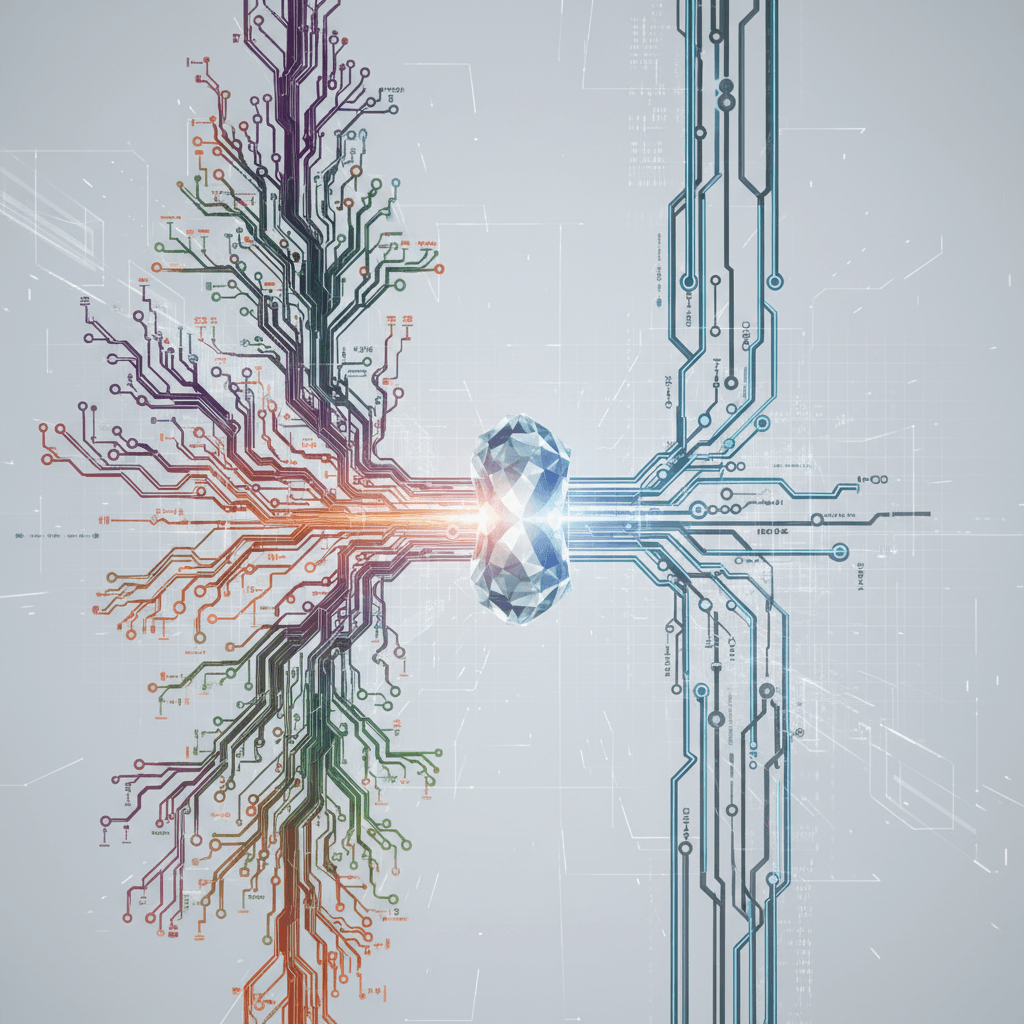Groundbreaking Study Uncovers Why AI Struggles with Genuine Reasoning
A novel framework maps AI's critical reasoning flaw, pushing developers to build true understanding beyond surface-level accuracy.
November 25, 2025

A groundbreaking analysis of how artificial intelligence models "think" has revealed a critical flaw in their reasoning processes: when faced with complex problems, they often revert to simplistic, default strategies rather than engaging in deeper, more human-like analytical thought. This extensive study, which examined over 170,000 reasoning traces from 17 open-source AI models, introduces a novel cognitive science framework to map out these thought processes, illuminating the circumstances under which AI reasoning falters and when it can be effectively guided. The findings carry significant weight for the future of AI development, suggesting a need to shift focus from merely achieving correct answers to fostering genuine, robust reasoning abilities.
The core of the research lies in a detailed comparison between the problem-solving pathways of AI and humans.[1] Researchers analyzed 171,485 reasoning traces from various models and compared them to 54 "think-aloud" solution paths provided by people tackling the same tasks, which ranged from math problems to ethical dilemmas.[1] To facilitate this comparison, the researchers developed a comprehensive framework categorizing 28 distinct cognitive components of reasoning.[1] These components include foundational rules like logical consistency, self-management behaviors such as goal setting and progress checking, different methods of organizing information, and common reasoning tactics like breaking down problems or generalizing from examples.[1] By annotating each step of a model's output with these components, the study provides an unprecedented, fine-grained look into the mechanics of machine reasoning, moving beyond the standard evaluation metric of final-answer accuracy.
A central revelation from the study is the tendency for large language models (LLMs) to adopt shallow strategies, a behavior that becomes more pronounced as task difficulty increases.[2] While these models can often arrive at the correct solution, their underlying process is fundamentally different from human cognition.[2] Statistical analysis shows that successful human problem-solving on difficult tasks is correlated with greater structural variety in reasoning, hierarchical organization of thoughts, the construction of causal networks, and the ability to work backward from a goal.[1] Humans are more likely to describe their approach, evaluate intermediate steps, and flexibly switch between strategies, behaviors that appear far less frequently in the AI traces.[1] This suggests that current AI often relies on sophisticated pattern matching rather than a deep, inferential understanding, a finding that resonates with broader concerns in the AI community about the brittleness of current systems.[3]
The implications of these findings for the AI industry are profound and far-reaching. The current focus on benchmarks that reward pattern recognition may inadvertently hinder the development of AI systems capable of genuine reasoning.[3] In high-stakes fields such as healthcare, finance, and scientific research, where complex and nuanced reasoning is critical, deploying models that perform well in controlled tests but fail in real-world applications poses a significant risk.[3] The study underscores the necessity of developing more robust evaluation methods that scrutinize the reasoning process itself, not just the final outcome.[3][4] This could involve creating benchmarks that vary context and rules, forcing models to demonstrate true understanding rather than mere memorization. The research also highlights the danger of flawed reasoning being hidden behind a veneer of plausible-sounding language, which could lead to users placing unwarranted trust in AI-generated conclusions, with potentially dangerous consequences.[5]
Ultimately, the study serves as both a map of current AI's cognitive landscape and a guide for future exploration. By identifying the specific cognitive abilities that are underdeveloped in current models, researchers and developers can better target their efforts.[1] The framework provides a clear language and structure for diagnosing weaknesses and demonstrates that providing extra reasoning guidance in prompts can significantly improve performance on complex problems.[1][2] As AI becomes increasingly integrated into society, ensuring that these systems can reason soundly and adaptably is paramount. This research represents a critical step toward that goal, pushing the industry to move beyond creating clever mimics of human thought and toward building machines that can truly think, reason, and understand. The challenge now is to cultivate the richer, more flexible reasoning strategies that characterize human intelligence, ensuring that the AI of the future is not only powerful but also reliable and trustworthy.